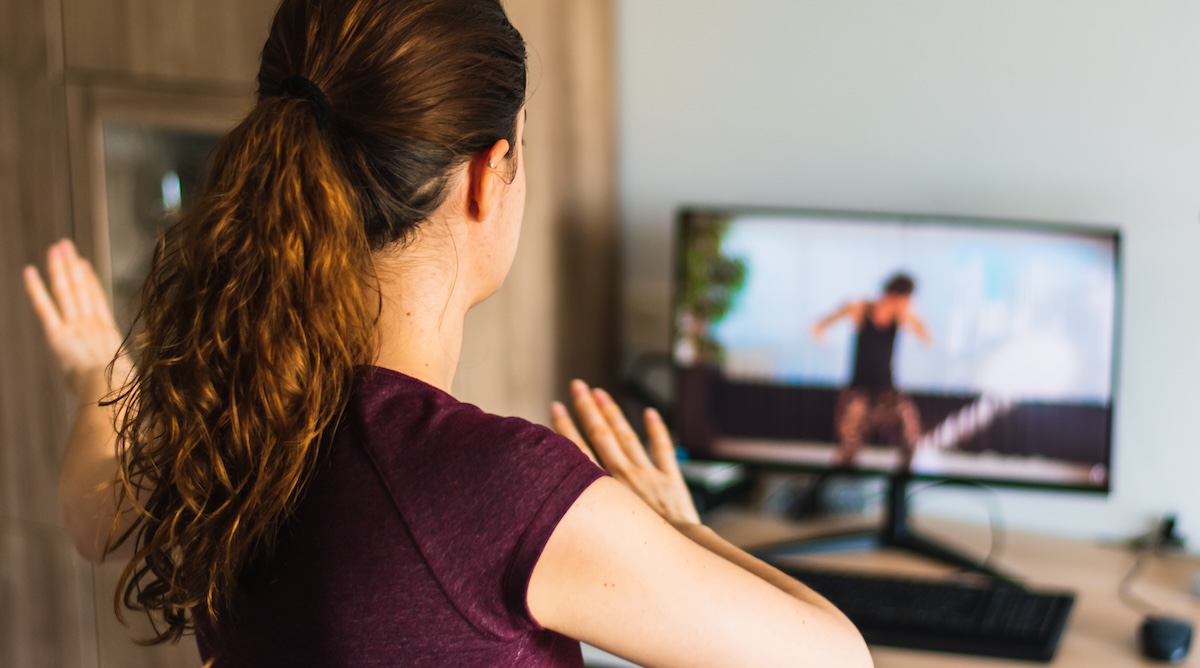Study: Students found online physical education ‘awkward,’ which can help educators design better PE classes

LAWRENCE — High school students who do not want to feel like they are on display, especially during physical education classes, found themselves in that situation when the pandemic forced education online. A study from the University of Kansas demonstrates that students largely found online physical education classes awkward and had a number of preferences for how they experience the classes — both of which influence their confidence in being physically active.
“A lot of studies before were focused on students who chose to do PE online,” said Ken Murfay, assistant teaching professor of health, sport & exercise sciences in KU’s School of Education & Human Sciences. “With the pandemic there was a lot more synchronous learning where people were online together. We wanted to see what they preferred and one of the things that affects our physical activity is our emotional state at the time of the event.”
Murfay led a qualitative study in which authors interviewed 40 high school students who took part in online PE classes during the pandemic. In addition to finding online PE awkward, they shared preferences that can help educators design classes that boost students’ physical activity self-efficacy by ensuring teachers, peers and people with varying skill levels lead demonstrations.
The COVID-19 pandemic forced a class that is inherently in-person to online settings. Similarly, previous research in physical education had largely not addressed online versions of the class.
The study, co-written by Sarah Pyszczynski of KU and Heather Erwin of the University of Kentucky, was published in the Journal of Teaching in Physical Education.
One main theme of the study’s findings was students found online PE awkward. When on camera, respondents saw themselves more than they would in person, which often led to feelings of insecurity or that others were watching them too.
“You’re looking at yourself on camera and probably judging yourself more than you would in person,” Murfay said. “Your mind can take things to a bad place pretty quickly in that situation.”
Students expressed several preferences in how they wished to take part, if required to do online PE. They largely preferred asynchronous learning, in which they were not doing activities at the same time as others, or in which they could do assignments on their own and record them by video or in a log.
They also expressed if they were required to be on camera, they only be required to show their faces or only see themselves and the instructor, but not the rest of the class.
Respondents also displayed several themes in how they prefer demonstrations to take place. In an online setting they were nearly evenly split on whether they prefer to watch a teacher demonstrate activities or watch an online video.
For in-person settings, students were split again on whether they preferred to see a teacher, who some considered the professional who had more expertise demonstrate activities, or if they’d rather see a student or someone closer to their own skill level lead demonstrations.
Very few expressed a preference for watching video demonstrations in person.
Of respondents who said they prefer seeing students demonstrate activities, the majority reported they’d rather see a student of the same or lower skill level than their own “in the wild.” For example, seeing a student perform an exercise in the weight room would more likely make them think they could do the same.
The findings’ importance lies in how they can help educators design classes that boost students’ physical activity self-efficacy — that is, their confidence to be physically active. Not only will that boost participation in class, but research has shown that individuals who have higher physical activity self-efficacy tend to be more physically active, which can help maintain a healthy body weight and increase chances of people being physically active throughout their lifetime, Murfay said.
The study results can also help educators design better courses for both in-person and online settings, especially should the latter be required again. Murfay, who has published research that found physical education instructors influence students beyond their school years, said future research can further delve into use of technology in PE classes and the social comparisons that students make in classes, including whether students compare themselves to peers of higher, lower or similar skill levels.
“In any educational environment, you want students to be comfortable,” Murfay said. “And you often have to go out of your way to do that. In the online environment, students felt like they were on display, and it’s a PE best practice to not have students on display like a situation of having only one soccer game happening with one ball, rather than having several games going simultaneously.
“For best results, the findings show we should mix it up — having teachers and students of all skill levels demonstrate.”